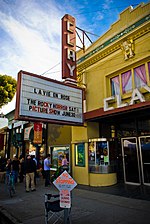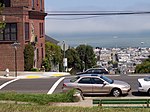St. Dominic Church in San Francisco
20th-century Roman Catholic church buildings in the United StatesBuildings and structures destroyed in the 1906 San Francisco earthquakeReligious organizations established in 1873Roman Catholic Archdiocese of San FranciscoRoman Catholic churches completed in 1928 ... and 2 more
Roman Catholic churches in CaliforniaRoman Catholic churches in San Francisco

St. Dominic's Church in San Francisco, California, is a Roman Catholic parish situated in the Western Addition neighborhood, located at the corner of Bush and Steiner Streets. The parish was established by the Dominican order in 1873, and the current church, built in the Gothic style, was finished in 1928. In addition to a large parish membership, St. Dominic's Church has one of the most active Catholic Young Adults Groups in the Archdiocese of San Francisco. The Church gave its name to Van Morrison's hit 1972 studio album, Saint Dominic's Preview.
Excerpt from the Wikipedia article St. Dominic Church in San Francisco (License: CC BY-SA 3.0, Authors, Images).St. Dominic Church in San Francisco
Bush Street, San Francisco
Geographical coordinates (GPS) Address Nearby Places Show on map
Geographical coordinates (GPS)
| Latitude | Longitude |
|---|---|
| N 37.7868 ° | E -122.4365 ° |
Address
Bush Street 2330
94115 San Francisco
California, United States
Open on Google Maps








